Finally have some down time with the computer to put up some pictures. As I said earlier, the ground loop contractor started with a plan to dig 7 trenches but abandoned that after the first trench because of cave-ins and running into junk that my clearing contractor buried 16 years ago so they switched to boring. They are boring 12 runs 150 feet long and 10 feet deep. It has been frustratingly slow work, they are getting about 1 to 1.5 bores done a day. This is mainly because of frequent equipment breakdowns and the distance from my place to parts stores or service that they can use. However in the end I think this will be better because it's must less ground disturbance, and the lines will be deeper (the original trench plan was 6 feet deep with lines at 6 feet and 4 feet.
I found out the plan had changed when the boring machine showed up at my place.
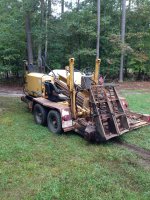
They dug two trenches, 3 feet deep, 150 apart, parallel to each other and the bore from one to the other.
Here is the boring machine in position to dig:
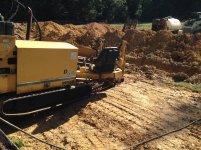
The borer, from the front:
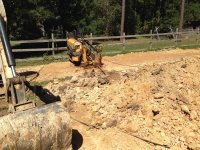
This "aerial" shot (from the roof of my barn) shows the whole operation. The piles of dirt at the far end of the pasture are the far trench that they are boring toward, from the trench at near end. The dirt area to the left is the one trench they completed before switching to boring.
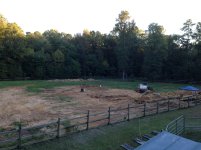
During the boring, one man operates the machine and another guides it using some pretty sophisticated electronics. The tip of the drill contains a precise transponder (they told me the transponder is costs $3K!) and his assistant uses this detector to keep track of where the bit is (laterally and depth) and give directions to the driller to keep it straight.
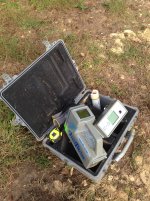
Once the drill pokes out of the far trench, they attach the geo line to it using "chinese fingers" and then pull it back through.
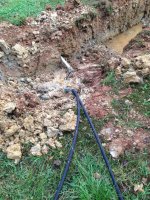
Here's a picture of the header trench with several of the lines completed. They aren't worried about the water, in fact wet soil conducts heat better than dry, apparently. My land does not perk, and this water is from rain over a week ago. They will pump it out when it's time to assemble the manifold.
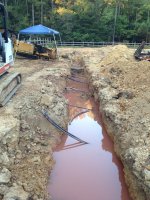
That brings us to present day. 8 of 12 bore lines have been completed. Looks like at least another week of fieldwork to go.






